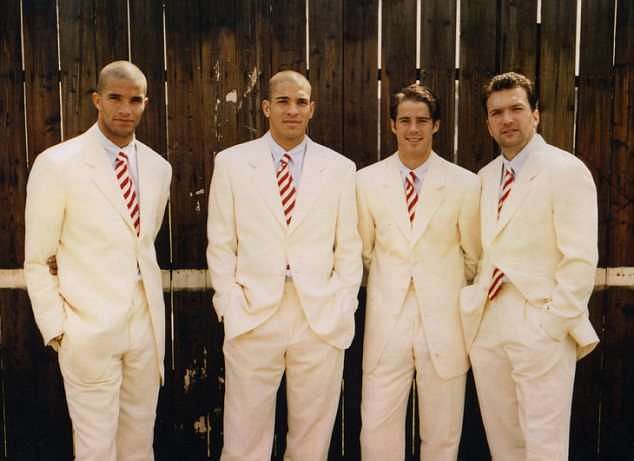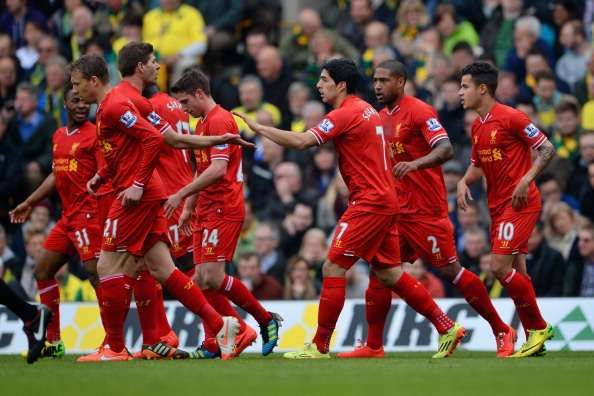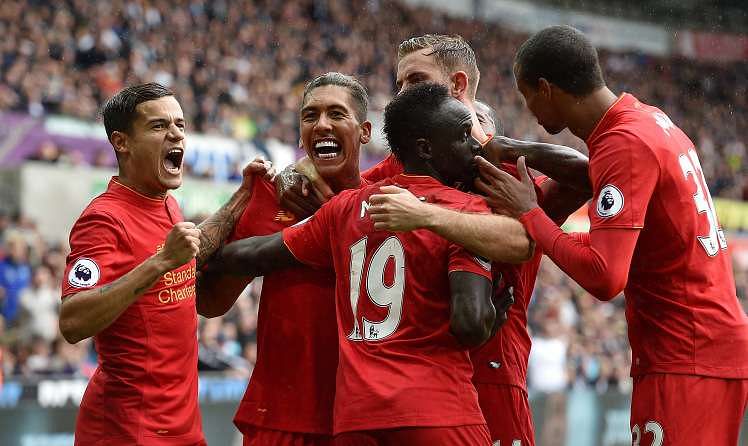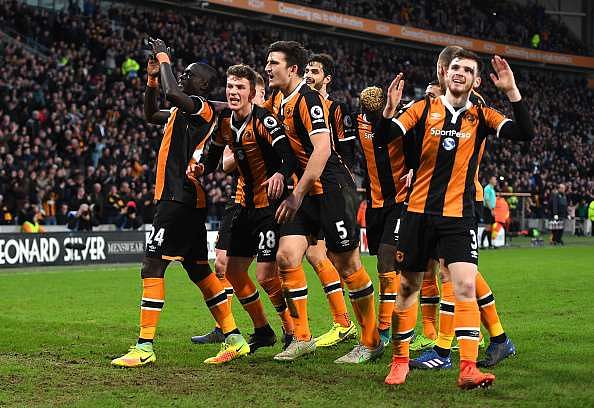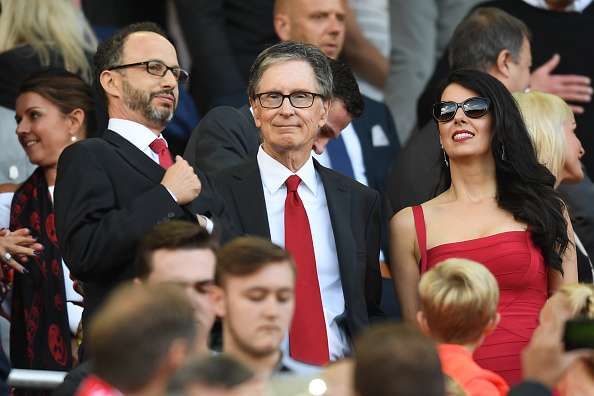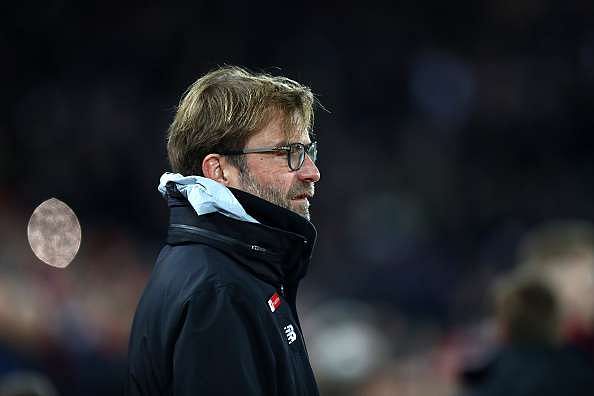
Liverpool’s title drought: Can Jurgen Klopp bring the Holy Grail to Anfield?
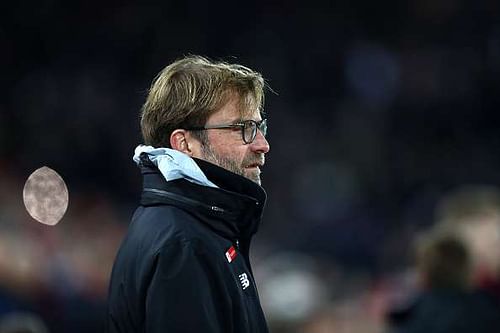
May 5, 1990. 3 PM GMT.
Liverpool kicked off against Coventry City on a sultry Saturday afternoon at Highfield Road, having already sealed their position at the top of the table a week ago at Anfield against Queens Park Rangers. An assured trophy did nothing to prevent the home side from receiving a sound thrashing at the hands of the champions in the last league fixture, though.
The Reds notched up their biggest away win of the season beating the Sky Blues 6-1, courtesy of a hat-trick by the legendary John Barnes and a brace by Ronny Rosenthal, following the opener from Ian Rush.
They clinched their 18th league title in style, an unmatched record at the time.
Feb 20, 2017. 3 PM GMT.
What is special about this day, you wonder? Well, nothing at all, apart from the fact that nearly 27 years have passed but Liverpool are yet to add a 19th domestic league trophy to their collection.
The background in brief
The 90s’ perennial underachievers
Two decades and more than two-thirds of the third – that is how long English football’s most successful club have managed to go without once securing the prized asset that used to be a regular addition to the Reds’ trophy room.
The unraveling began in the mid-to-late nineties when the Liverpool team was undeniably talented and arguably unbeatable on paper, but their actions and image – that of the ‘Spice Boys’ – combined with a lack of results commensurate with their individual abilities became their undoing.
The indiscipline of the players and Roy Evans’ laissez faire management style led to fans, pundits and commentators alike deriding the team for their performances on the pitch and their manager for his inability to assert himself.
This era was also the beginning of Manchester United’s rise to prominence; over time, the Devils would go on to surpass the Reds’ title collection to amass 20 of their own.
Best undermined by the rest
Liverpool’s squad boasted of the likes of Michael Owen, Steven Gerrard, Emile Heskey, Fernando Torres, Luis Suarez, Xabi Alonso, Javier Mascherano and Pepe Reina during the course of the years. A bunch of hardworking players such as Dirk Kuyt and Jamie Carragher, fan favourites such as Daniel Agger or important goal-scorers like Luis Garcia all complemented the individual talents and stirred up the Kop from their seats with their exhilarating style of play.
However, for every player par excellence, there was more than a share of mediocrity that constituted the rest of the Reds’ dressing room. The likes of El Hadji Diouf, David N'Gog, Salif Diao spring to mind instantly, but dedicated columns could be written in (dis)honour of the club’s worst signings.
As a consequence, the solidity of the spine – a group of players capable of achieving the best – has been regularly undermined by the ineffectiveness of the rest, besides prompting an exodus of some of the best talents.
Cutting it close
The Reds have flirted with the idea of winning the title on more than one occasion. In fact, they came close to conquering the summit four times, the first of which was in the last edition of the old format of the league, called the First Division back then.
The three remaining instances where Liverpool finished second occurred during the Premier League era – first in 2001-02, then in 2008-09 and most recently, the agonisingly close runners-up finish in 2013/14.
The Reds missed pole position by seven points in 2001-02 under Gerard Houllier, while the gap between them and the champions Manchester United was just four points in 2008-09 under the stewardship of Rafa Benitez.
The most crushing of them all is still afresh in most fans’ memories, though. The Reds finished second to Manchester City in 2013/14 under Brendan Rodgers, with just two points separating the sides.
Did the Reds scupper a golden chance this season?
Liverpool finished in eighth place at the end of the 2015/16 season, out of contention for the European competitions. However, Jurgen Klopp’s tenure at the helm of the club had just begun and the initial signs were promising.
Two cup finals and a restoration of identity, belief and playing style, the return of a swagger among the players whose shoulders were no longer hunched up while on the pitch were pleasing enough sights for the Anfield faithful.
The 2016/17 campaign kicked off with a thriller against Arsenal at the Emirates, followed by a humbling defeat to the Clarets at Turf Moor. That did set tongues wagging and the doubters returned in full force to question whether the Reds had it in them to quell the challenge of the lesser lights in the PL.
Also read: 5 things Jurgen Klopp needs to do to ensure Liverpool are title contenders next season
A little over two months of staying undefeated while playing some attractive football saw optimism and hope return as Liverpool were perched atop the league table in November. With no European distractions, they were perceived to be well in contention to challenge the likes of Arsenal, City and Chelsea for the title.
At the turn of the year, as the season reached the half-way mark, Chelsea sat on top with 49 points. But with just six points separating the Blues from then second-placed Liverpool on 43, and with the latter still to host Chelsea at Anfield in the New Year, the Reds were far from written off.
“Well begun is half-done” - Aristotle
A good beginning is an almost certain path to success, the Greek philosopher assured. But someone must have forgotten to tell Liverpool that this is the Premier League and there is a whole other half yet to be dealt with.
January turned out to be a different ball game, with Liverpool’s sole win coming against lowly Plymouth Argyle in a replay of the third round of the FA Cup. In the league, the Reds could manage only three points from an available 12 with draws against Sunderland, Manchester United and Chelsea and a loss to Swansea.
February started off with an alarming defeat to Hull City at the KCOM stadium before a semblance of normality was restored in the win against Tottenham Hotspur at Anfield.
Nearly two-thirds of the season is now done and the six-point gap has burgeoned to 11 points, with Liverpool occupying the fifth spot, a point off Champions League qualification places.
The target at the start of the season for Klopp and co. is certain to have been a top 4 finish and a potential trophy. However, the fact that the Reds were in contention and have the mettle to beat anyone on their day is the reason many fans believe that they fumbled a gilt-edged chance to win the title in the ongoing season.
So what went wrong in a span of just over 40 days? How did the Reds go from “challengers” to “also-rans”?
#1 Lack of quality in depth
Chelsea and Liverpool were given an edge in the league by pundits, as the absence of European football could be taken advantage of by both to get hold of some silverware.
Antonio Conte had taken over at Chelsea in the summer and Klopp’s first full season in charge was set to commence, but that is where the similarities ended.
Chelsea had a squad that had steamrolled to the title a season ago in 2014/15; the last season could be considered an anomaly. The presence of world-class players such as Eden Hazard and Cesc Fabregas along with the lethal Diego Costa, and added solidity in the midfield with the acquisition of N’Golo Kante only added shine to the existing sheen.
On the other hand, the Reds were guilty of not shoring up their squad in the summer. Nathaniel Clyne was the only recognized right-back and yet Jon Flanagan was allowed to leave on loan. Alberto Moreno was out of favour at left-back but instead of purchasing, or at least, loaning an alternative, James Milner was chosen to be his replacement. That Milner has more than ably done the job of slotting in seamlessly is credit to the quality and mentality of the player he is.
Any injuries to Liverpool’s attacking players jeopardised the dynamics of the side to the extent that they did not play to potential. The absence of even one of Philippe Coutinho, Adam Lallana, Roberto Firmino and Sadio Mane could scuttle the overall performance.
A shining example of this was provided at Old Trafford where the introduction of Lallana in the 70th minute completely changed the way the Reds attacked and approached the game.
Similarly, Emre Can has a lot to learn before slotting in for Jordan Henderson as a deep-lying midfielder. The German does not effectively shield his backline and for a defence that is already known to leak goals, his presence does not provide any comfort or assurance.
#2 One Man(e) team?
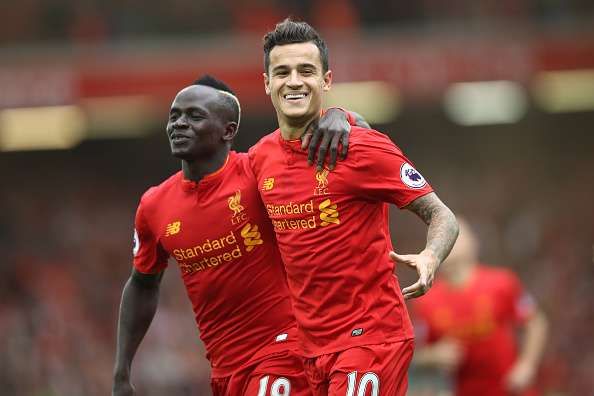
While injuries to players and the proportional effect it would have on the team may not have been envisaged in advance, Sadio Mane’s participation in the AFCON was a well-known fact which Klopp and his team hadn’t prepared sufficiently for.
There was, and is, no one in the Liverpool squad who provides the exact same qualities that Mane does. Not only does he run into spaces and provides pockets for his teammates to exploit, his lung-bursting runs prove extremely difficult for opposition defenders to deal with.
Also read: EPL 2016/17: Analysing Liverpool in the absence of key players
Most of all, though, it is his understanding with the trio of Firmino, Coutinho, and Lallana that Liverpool missed. The dynamic exchange of positions by the Reds quartet and the fluidity in their attack was nowhere to be seen when either or both of Divock Origi and Daniel Sturridge were on the pitch.
It is unfortunate that the Senegalese forward’s month-long African sojourn coincided with Liverpool’s worst month in the league season thus far. However, it is not because Liverpool are overly reliant on Mane alone; it is their dependence on their frontline and the lack of positional flexibility when it comes to those four key players that proved to be the spoke in their wheel.
#3 Absence of a plan B
Make no mistake, there has been a lot of analysis about this ‘plan B’ and the fact that Liverpool struggle significantly against teams that sit back requires no more proof than merely watching their games.
The Reds thrive against teams that play open, attacking football as it provides them space, width and time as Spurs discovered mostly recently to catastrophic effect. Arsenal, Leicester, Crystal Palace and even Watford were welcome opponents but they struggled against the low block of Southampton and Manchester United on more than one occasion.
Against the current top six in the table, Liverpool are unbeaten and have racked up 16 points out of a possible 24 (67% points win ratio) with the Reds yet to play Arsenal and Manchester City. On the other hand, they have managed to secure just 23 points from a possible 39 against the bottom half of the table (59% points win ratio).
The Reds did manage to whitewash Hull in the early stages of the season at Anfield but were left clueless and bereft of ideas at the KCOM as Marco Silva’s Tigers deservedly won the game. Klopp’s men played around low blocks patiently in the beginning of the season and managed to find a way on a couple of occasions as evidenced against West Brom or Middlesbrough, but it was not easy.
If the aerial route is Klopp’s method of choice (due to a forced hand or otherwise), then he needs a striker tall and also capable enough of holding up play and winning headers. Endless passing in midfield before launching an aimless long ball in the air is not a tactic that is going to work when Roberto Firmino is playing as the false 9!
For all their nimble feet and slick play, the average height of Liverpool’s quartet is 1.75m. On a stand-alone basis, you can make nothing of it, of course. When you compare it with the likes of Olivier Giroud at Arsenal and Zlatan Ibrahimovic at Manchester United, who are 1.94m and 1.95m tall respectively, the argument begins to make sense and that is what context and perspective bring.
Can Klopp do it?
The club’s reins have been through the hands of many a man before the German took charge. With passion and emotion that match ambition, combined with proven success at Borussia Dortmund, Klopp seemed like the perfect match for Liverpool.
In his first address to Liverpool supporters, the former Mainz coach spoke of turning doubters into believers. While he certainly has the full backing of Liverpool fans around the world, an innate understanding of the Reds’ problems should be enough for anyone to see where the lack of belief stems from.
Are FSG to blame?
Liverpool were on the brink of administration and there was a serious threat of being relegated back in 2010, under the ownership of American businessmen George Gillett and Tom Hicks. While the sheiks and businessmen, with pockets as deep as the Pacific, had entered the Premier League, the Reds were in financial doldrums owing to a lack of due diligence before the reins of the club were entrusted to the men from America.
Enter John Henry and Fenway Sports Group (FSG), who eventually acquired the club in early October 2010 after a bitter court battle. FSG said all the right things after taking over from Hicks-Gillett but Liverpool fans and the wide world was wary; they had ‘heard’ a lot before.
The owners tried to replicate their successful ‘Moneyball’ model with the Boston Red Sox at Liverpool. Buying young players with huge potential on the cheap, turning them into stars and selling them for big money may have yielded results in America. Au contraire, in the inflated European markets, a ‘transfer committee’ presided over by those who have no understanding of the region’s football dynamics has proved detrimental on Merseyside.
Liverpool brought in Mario Balotelli and Ricky Lambert in place of the departing Luis Suarez, a more sordid contrast would be difficult to envision across Europe’s top five leagues. Lazar Markovic is plying his trade on loan at Hull City after the Reds had invested £20m in the Serbian winger in the summer of 2014.
To make matters worse, a potential star in Raheem Sterling could not be kept hold of and had to be sold to Premier League rivals Manchester City.
The football landscape is fast-changing, unforgiving and money-minded, and there is no such thing as loyalty. The Reds need players who will lift the team performance in the present and win something together.
The concept of breeding a generation of players to win together five years later is a model long dead, with the onset of crazy TV and endorsement money. This, however, is a fact the Reds ownership fails to appreciate enough, and that is one of the root causes of all transfer-related problems.
Off the pitch, there is no denying the fact that tapping into the commercial revenue stream has fetched positive results. This is evidenced by Liverpool’s presence at the number 9 position for the second straight year in Deloitte’s 2017 Football Money League report published in January.
In May 2016, Forbes valued Liverpool at £1,042m, a 58% increase over the previous year. The Reds only trailed the Manchester clubs, Chelsea and Arsenal and were well ahead of Spurs in tenth place.
However, what is of utmost importance is that when performances on the pitch do not measure up to expectation, the income from such secondary streams are sure to slide downhill.
Klopp will need time and patience
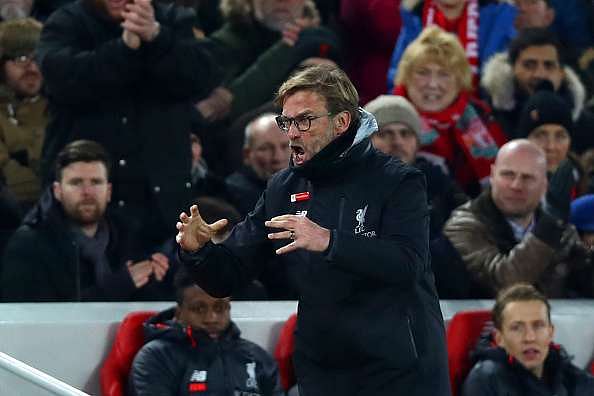
Two things that are extremely scarce in the Red half of the Mersey are time and patience, but Klopp will need a bit of both. 27 years has been a long wait and dealing with constant jibes and banter from other fans has not made life easier for the Liverpool faithful.
FSG may not measure up to the likes of the Manchester clubs or Chelsea owners when it comes to net worth and it is certainly important to exercise prudence when it comes to spending, but unless they loosen their purse strings without having to sell their best talent pool, there is little that can alter the course of Liverpool’s path.
While the board can deal with off-the pitch problems, those on the pitch will have to be dealt with by Klopp and co.
Given his wisdom, exposure and experience, Klopp is best equipped to analyze the situation at hand. He and his team – Zeiko Buvac, the brain and Peter Krawietz, the eyes – will have to devise a way for Liverpool to win irrespective of player absentees and opposition’s style of play; that is when belief will be truly and fully restored.
It is also when glory shall return to Liverpool for good, and not just offer fleeting glimpses.

